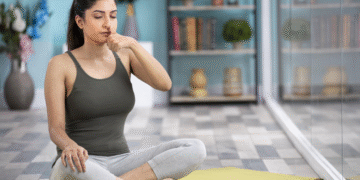If you’ve ever done a few reps of bicycle crunches and found yourself questioning whether you were doing them right, then you’re not the only one. This favorite ab exercise comes up in almost every core workout, but when done properly, it does much more than just burn your stomach—it targets your obliques, the deeper abdominal muscles, and even your legs.
Bicycle crunches have become quite popular due to the twisting motion which not only works the obliques but also the rectus abdominis, Sphinx lets say. Therefore, unlike basic crunches that usually either make your neck hurt or do not quite move beyond the surface of the abs area, this one targets all of the layers of your midsection. However, proper form is the most important aspect and doing it slowly is where the real secret lies.
To execute a bicycle crunch correctly, first lie down on your back on an exercise mat. Push up your legs to a tabletop position with your knees bent at 90 degrees. Place your hands behind your head without putting much pressure and concentrate on lifting your upper back off the ground without putting any strain on your neck. Like you are zipping up your stomach, bring your core in from the pelvis to the ribs. Now, while turning your torso, straighten one leg and with the opposite elbow, try to touch the knee. After that, do the other side and repeat the movement slowly while keeping it under control.
A very common mistake made by many people is the movement is initiated from the elbows instead of the core and that not only will do not any good but will also force your neck. If your neck is feeling sore, stop, and readjust your position. You should be moving solely with your abs, and your arms or shoulders should not be included in the movement.
If you’re determined to upgrade the bicycle crunches, then one simple method is to halt when your elbow and knee touch. This little pause generates much more tension in the muscles and deeper responsiveness. The challenge can also be sharpened by increasing the reps, slowing the pace, or adding a few more rounds.
But what if lying on the floor makes you uneasy? A standing alternative to the bicycle crunch could be what you are looking for. Place your feet hip-width apart to begin, raise one knee to the chest, and turn your upper body to take the opposite elbow to the knee. Each side should be alternated just like you do on the floor. It is quite a good low-impact substitute that separate ab muscles work well, too.
One of the strong points of bicycle crunches is that they recruit several muscles at once. One of the first muscle groups to engage is the rectus abdominis—the long vertical ab muscles situated up front of the torso. In addition to the tucking and extending of the legs, you also use the obliques and transverse muscles, which are engaged in the stability and deep core strength functions. In fact, the movement is not at all limited to the core but goes as far as including the hips, thighs, and quads for support to the abdominis rotation.
Apart from the cosmetic aspect, powerful core muscles are key in almost all areas of life such as weight lifting, running, posture, balance, and injury prevention. Also, because it is a move that places minimal stress on the joints, the bicycle crunches are suitable for most people who exercise. Nevertheless, for women in the family way and for those who experience discomfort in the lower back area, a conversation with the doctor or a trainer would be in order before proceeding to the exercise.
The pinning of your gaze on the things that your body is doing and the dropping of the tempo will enable you to show the best performance during the whole exercise. Bicycle crunches might seem primitive, but when carried out deliberately, they can rank among the foremost belly exercises that can be done at home or in the gym.














